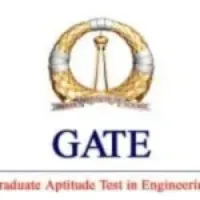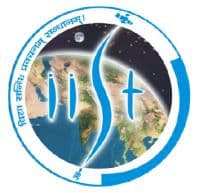Latest Applications Open 2024:
GATE 2025 Syllabus of Electronics & Communications Engineering has been Released. Graduate Aptitude Test in Engineering (GATE 2025) is an examination that primarily tests the comprehensive understanding of the candidates in various undergraduate subjects in Engineering/Technology/Architecture and postgraduate level subjects in Science. IISc Banglore conducts its Exam.
The GATE 2025 score of a candidate reflects a relative performance level in a particular subject in the examination across financial assistance for several years.
The score is used for admissions to post-graduate programs (e.g., M.E./M.Tech/ Direct PhD) in centrally funded Indian Institutes of higher education (i.e., Institutes with financial assistance from MHRD and other Government agencies).
GATE 2025 Electronics & Communications Engineering Syllabus – PDF Released
GATE 2025 Electronics & Communications Engineering Syllabus has been Released Now. Click to Download the GATE EC Syllabus Pdf.
Section 1: Engineering Mathematics
Linear Algebra: Vector space, basis, linear dependence and independence, matrix algebra, eigenvalues and eigenvectors, rank, the solution of linear equations – existence and uniqueness.
Calculus: Mean value theorems, theorems of integral calculus, evaluation of definite and improper integrals, partial derivatives, maxima and minima, multiple integrals, line, surface, and volume integrals, Taylor series.
Differential Equations: First-order equations (linear and nonlinear), higher-order linear differential equations, Cauchy’s and Euler’s equations, methods of solution using a variety of parameters, complementary function and particular integral, partial differential equations, variable separable method, initial and boundary value problems.
Vector Analysis: Vectors in plane and space, vector operations, gradient, divergence and curl, Gauss’s, Green’s, and Stoke’s theorems.
Complex Analysis: Analytic functions, Cauchy’s integral theorem, Cauchy’s integral formula, Taylor’s and Laurent’s series, residue theorem.
Numerical Methods: Solution of nonlinear equations, single and multi-step methods for differential equations, convergence criteria.
Probability and Statistics: Mean, median, mode and standard deviation; combinatorial probability; probability distribution functions – binomial, Poisson, exponential and normal; Joint and conditional probability; Correlation and regression analysis.
Section 2: Networks, Signals, and Systems
Network solution methods: nodal and mesh analysis; Network theorems: superposition, Thevenin and Norton’s, maximum power transfer; Wye-Delta transformation; Steady state sinusoidal analysis using phasors; Time-domain analysis of simple linear circuits; Solution of network equations using Laplace transform; Frequency domain analysis of RLC circuits; Linear 2-port network parameters: driving point and transfer functions; State equations for networks.
Continuous-time signals: Fourier series and Fourier transform representations, sampling theorem, and applications; Discrete-time signals: discrete-time Fourier transform (DTFT), DFT, FFT, Z-transform, interpolation of discrete-time signals; LTI systems: definition and properties, causality, stability, impulse response, convolution, poles and zeros, parallel and cascade structure, frequency response, group delay, phase delay, digital filter design techniques.
Section 3: Electronic Devices
Energy bands in intrinsic and extrinsic silicon; Carrier transport: diffusion current, drift current, mobility and resistivity; Generation and recombination of carriers; Poisson and continuity equations; P-N junction, Zener diode, BJT, MOS capacitor, MOSFET, LED, photodiode and solar cell; Integrated circuit fabrication process: oxidation, diffusion, ion implantation, photolithography, and twin-tub CMOS process.
Section 4: Analog Circuits
Small signal equivalent circuits of diodes, BJTs, and MOSFETs; Simple diode circuits: clipping, clamping, and rectifiers; Single-stage BJT and MOSFET amplifiers: biasing, bias stability, mid-frequency small-signal analysis, and frequency response; BJT and MOSFET amplifiers: multi-stage, differential, feedback, power and operational; Simple op-amp circuits; Active filters; Sinusoidal oscillators: criterion for oscillation, single-transistor, and op-amp configurations; Function generators, wave-shaping circuits, and 555 timers; Voltage reference circuits; Power supplies: ripple removal and regulation.
Section 5: Digital Circuits
Number systems; Combinatorial circuits: Boolean algebra, minimization of functions using Boolean identities and Karnaugh map, logic gates and their static CMOS implementations, arithmetic circuits, code converters, multiplexers, decoders, and PLAs; Sequential circuits: latches and flip-flops, counters, shift-registers, and finite state machines; Data converters: sample and hold circuits, ADCs and DACs; Semiconductor memories: ROM, SRAM, DRAM; 8-bit microprocessor (8085): architecture, programming, memory, and I/O interfacing.
Section 6: Control Systems
Basic control system components; Feedback principle; Transfer function; Block diagram representation; Signal flow graph; Transient and steady-state analysis of LTI systems; Frequency response; Routh-Hurwitz and Nyquist stability criteria; Bode and root-locus plots; Lag, lead and lag-lead compensation; State variable model and solution of state equation of LTI systems.
Section 7: Communications
Random processes: autocorrelation and power spectral density, properties of white noise, filtering of random signals through LTI systems; Analog communications; amplitude modulation and demodulation, angle modulation and demodulation, spectra of AM and FM, superheterodyne receivers, circuits for analogue communications; Information theory: entropy, mutual information, and channel capacity theorem; Digital communications: PCM, DPCM, digital modulation schemes, amplitude, phase, and frequency-shift keying (ASK, PSK, FSK), QAM, MAP, and ML decoding, matched filter receiver, calculation of bandwidth, SNR and BER for digital modulation; Fundamentals of error correction, Hamming codes; Timing and frequency synchronization, inter-symbol interference, and its mitigation; Basics of TDMA, FDMA, and CDMA.
Section 8: Electromagnetics
Electrostatics; Maxwell’s equations: differential and integral forms and their interpretation, boundary conditions, wave equation, Poynting vector; Plane waves and properties: reflection and refraction, polarization, phase, and group velocity, propagation through various media, skin depth; Transmission lines: equations, characteristic impedance, impedance matching, impedance transformation, S-parameters, Smith chart; Waveguides: modes, boundary conditions, cut-off frequencies, dispersion relations; Antennas: antenna types, radiation pattern, gain, and directivity, return loss, antenna arrays; Basics of radar; Light propagation in optical fibres.
Other GATE Related Syllabus PDF
If you have any queries regarding GATE 2025 Electronics & Communications Engineering, you can ask your query and leave comments below.

As a dedicated Biology Science graduate, I’m passionate about sharing the latest updates in national and state entrance exams through my blog. I aim to keep aspiring students informed about exam trends, important dates, and changes in syllabi. With a keen interest in education, I strive to offer valuable insights for students navigating the competitive landscape of entrance examinations and admission tests. Stay updated with me.


